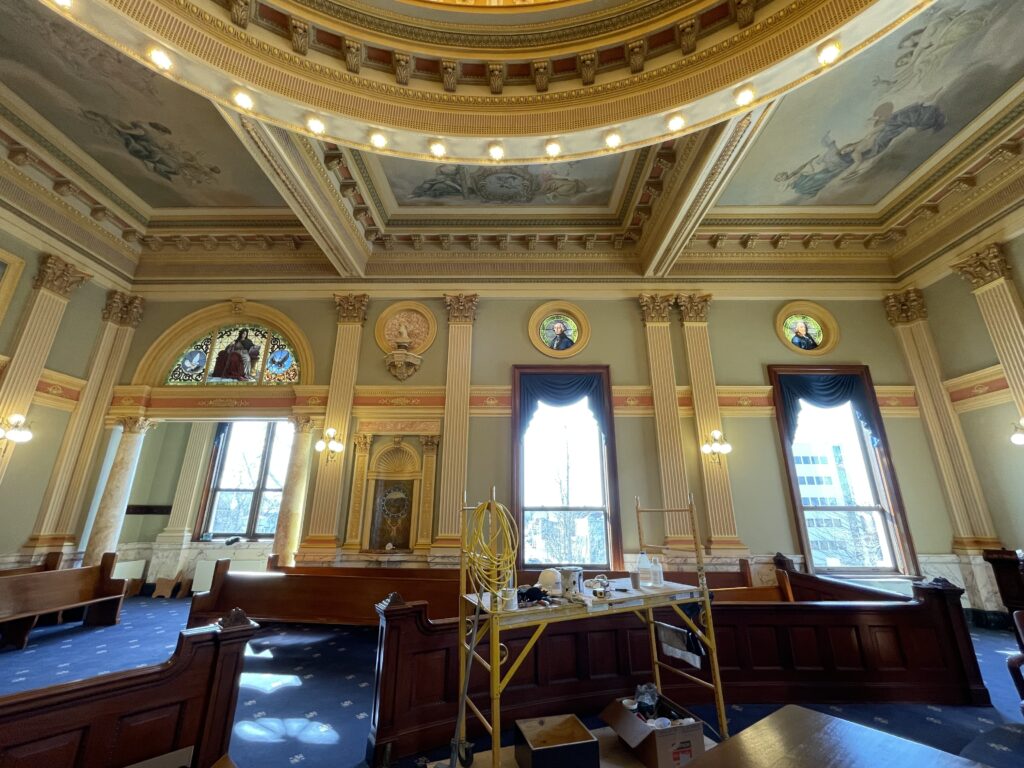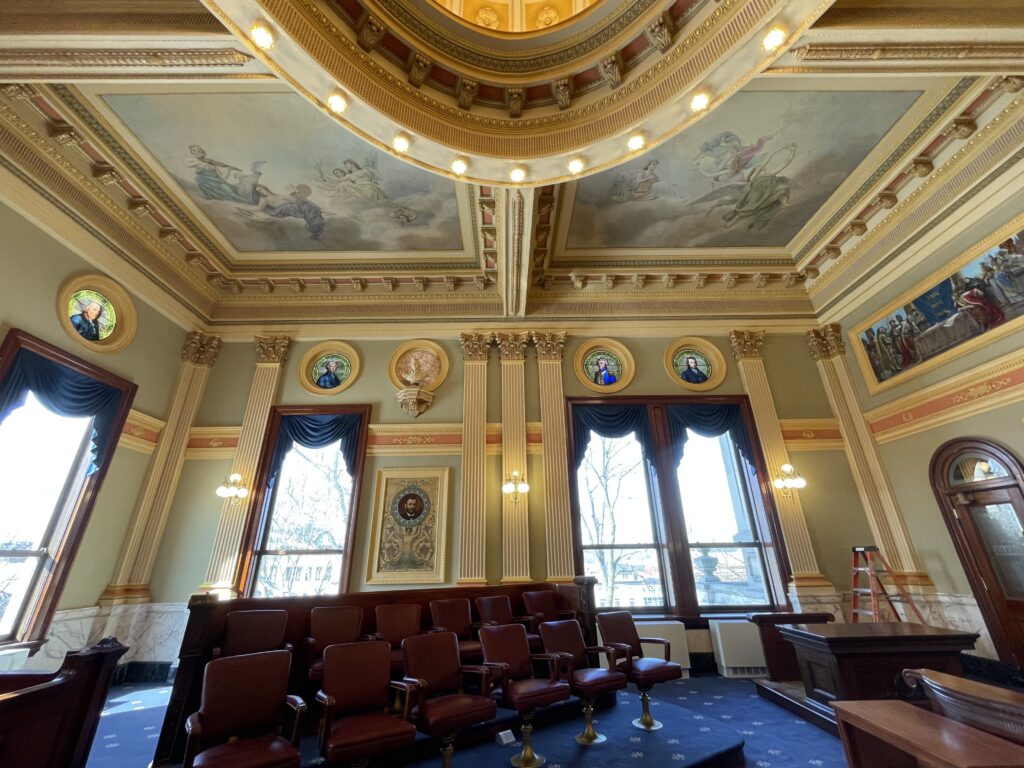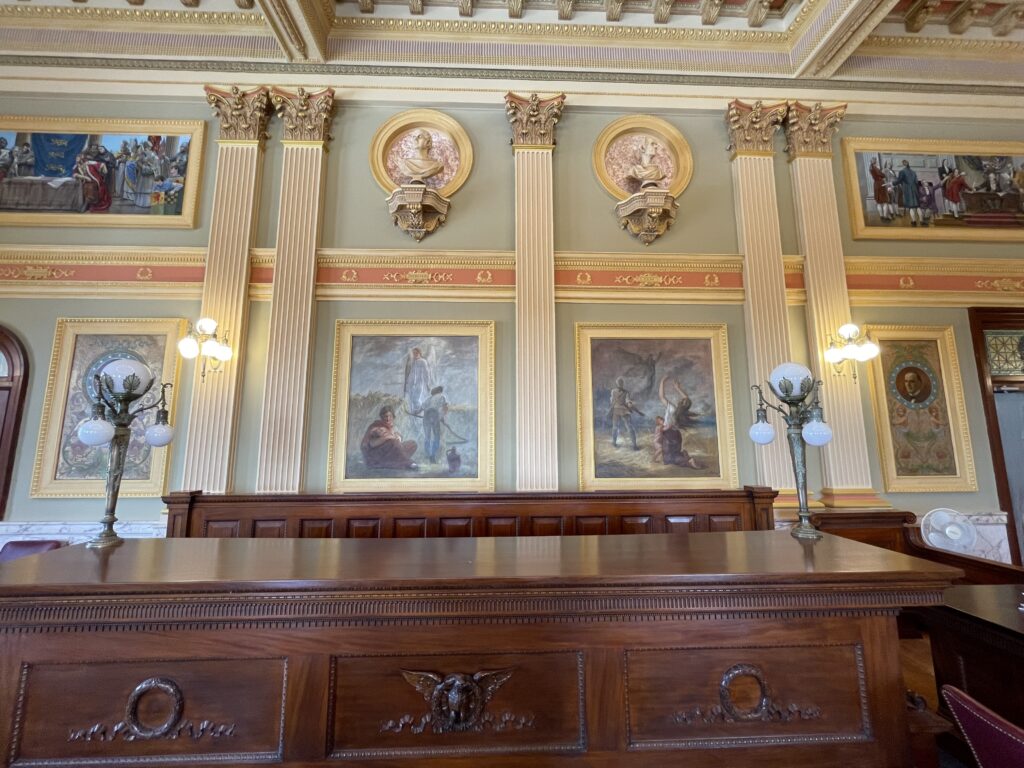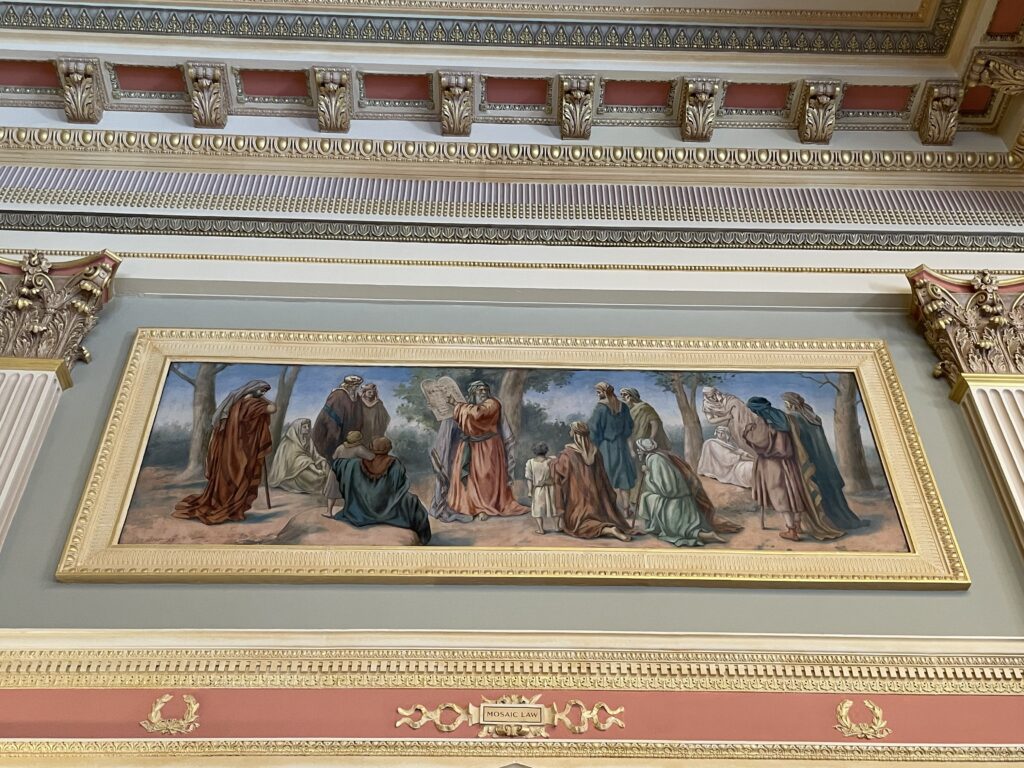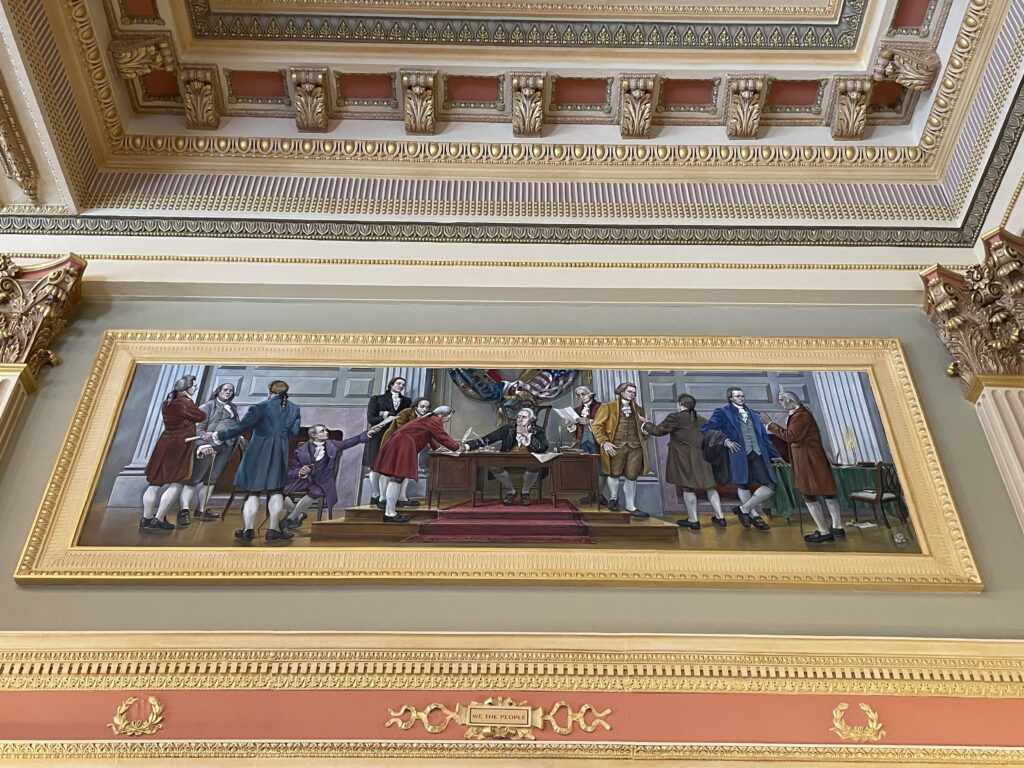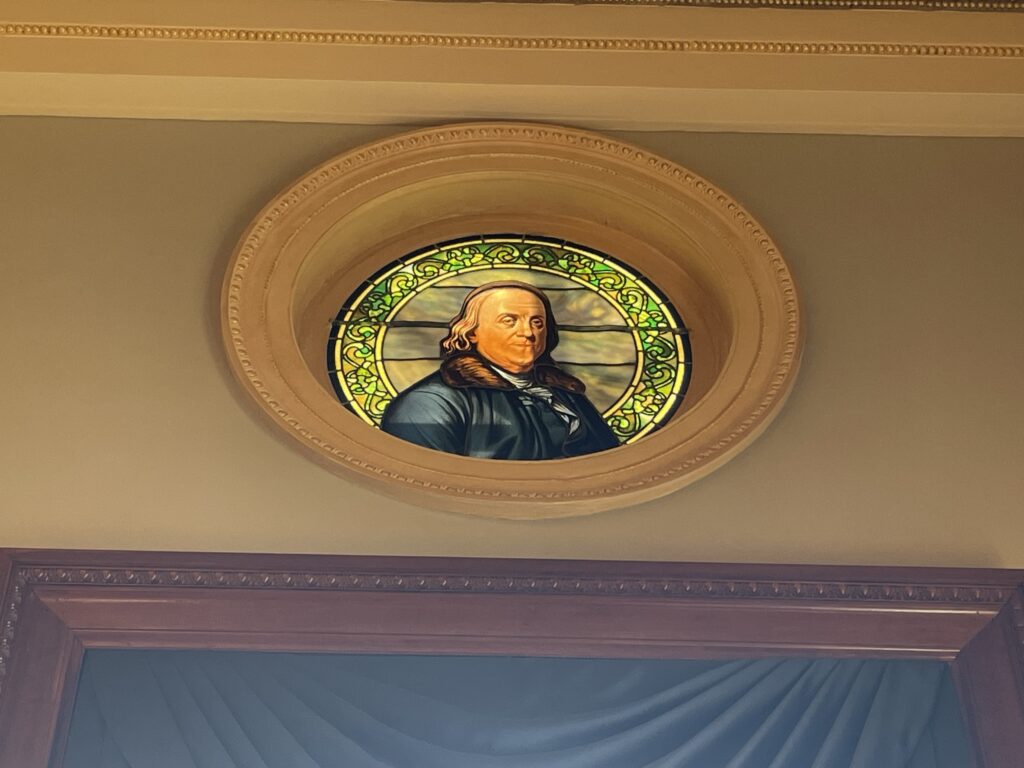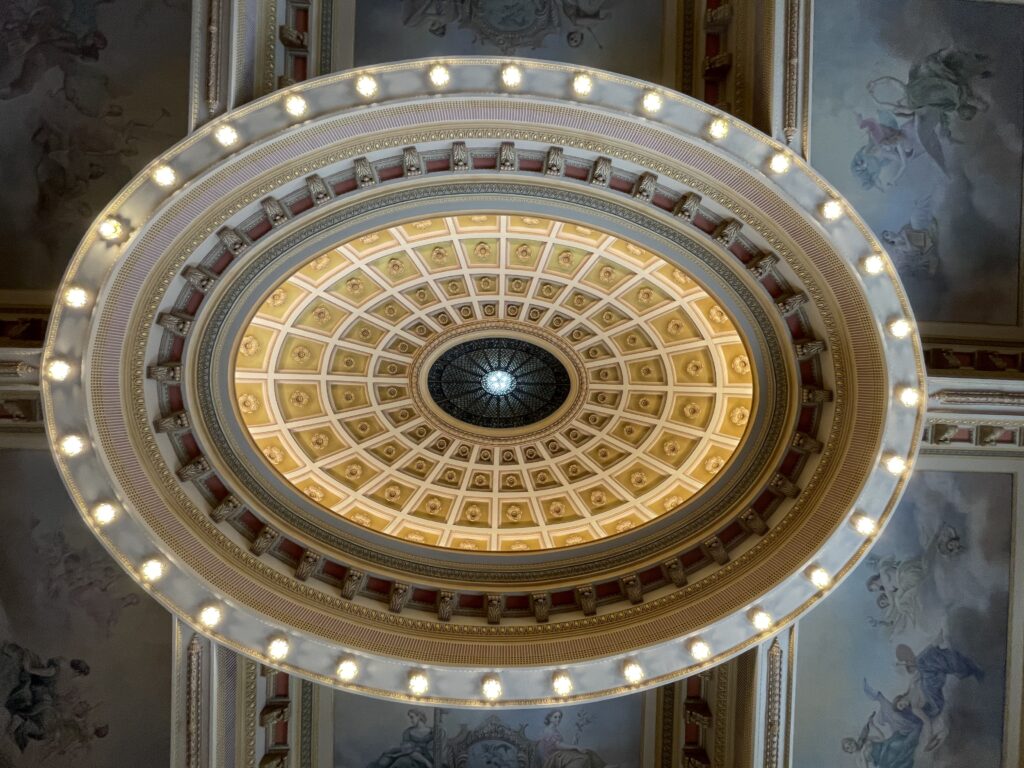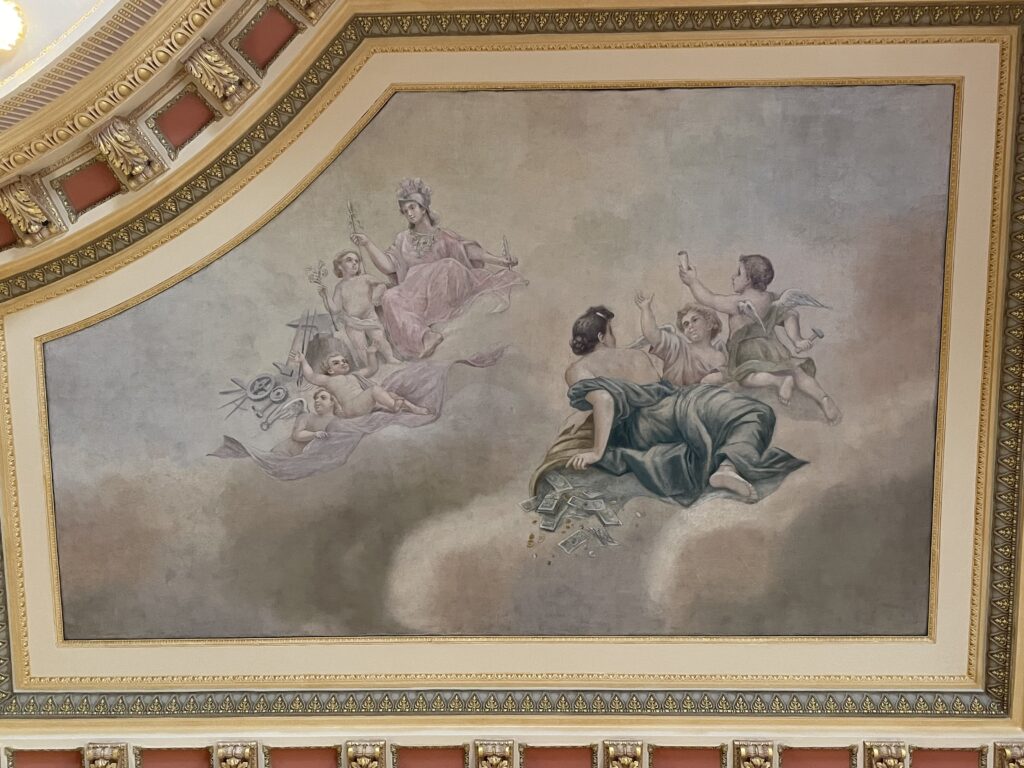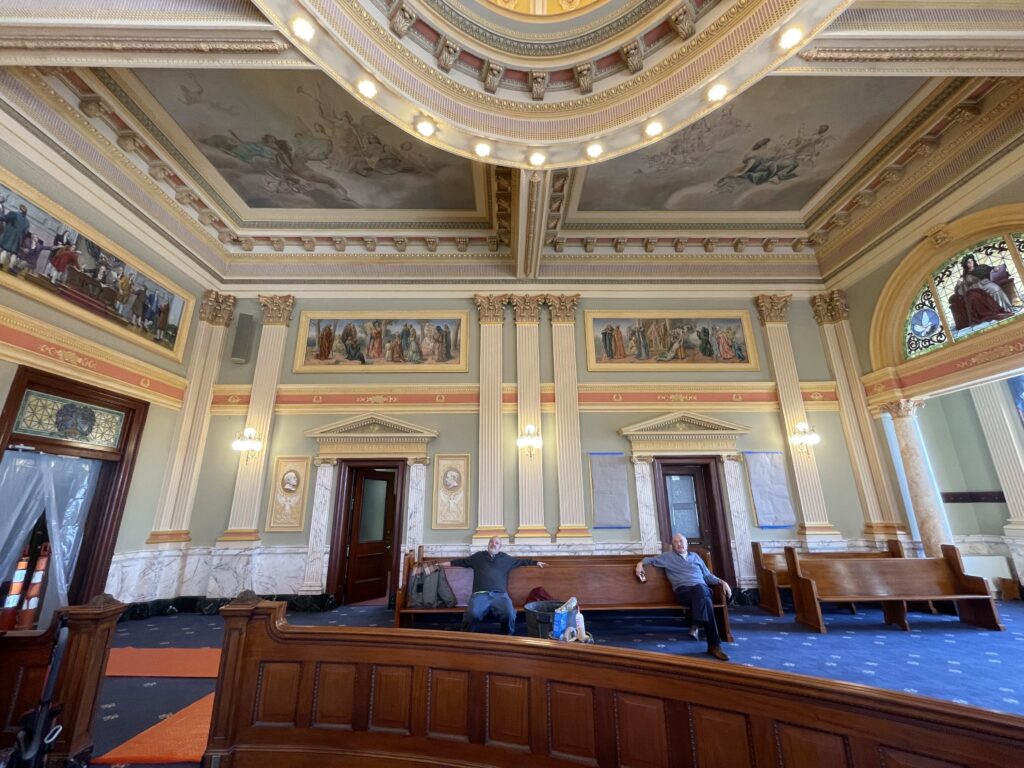The artists have packed up their brushes. The two-story maze of scaffolding is gone. A regal blue carpet covers the floor. And the shine is back on the warm wood benches, tables and chairs.
The smell of fresh paint hangs in the air as a small team of electricians and contractors puts the finishing touches on the $3.2 million historic renovation of the West Courtroom in the 149-year-old Licking County Courthouse in downtown Newark.
After nine months of holding court in the lower level of the nearby County Administration Building, Common Pleas Judge Thomas Marcelain said he is eager to get out of the basement and back into the second-floor art gallery that is his courtroom.


Workers from Robertson Construction of Heath, construction manager for the project, and contractors running wires for sound and computers, should be done by early March, when Marcelain will again hear cases in the courthouse built in 1876.
“It’s been very special to be a part of this project and this history,” said Damon Blood, who is supervising the final phase of the courtroom project for Robertson. He said he appreciated watching and learning the fine points of historic restoration from a team from Conrad Schmitt Studios, of New Berlin, Wisconsin, which repaired and painted the ceiling and many other decorative elements in the room.
Few are more excited about the completion of this final phase of a 10-year top-to-bottom restoration of the courthouse than County Commissioner Tim Bubb, who has helped lead the $18.2 million project.
He beamed as he walked around the West Courtroom rattling off the names of U.S. presidents and other statesmen whose busts and images decorate the walls – along with detailed descriptions of restored murals on the ceiling and walls, two new murals, and stunning new stained-glass images.


“There’s the signing of the Magna Carta in 1215,” he said, pointing to a new mural on one side of the judge’s bench. “And there’s the signing of the Constitution. They’re on either side of the judge because they’re the basis for our laws and justice system.”
The new murals are of the same style and character as two original murals on the south courtroom wall – one depicting Mosaic Law and the other Solomon’s Judgement.
It would be tempting to lie down on the new carpet and stare at the ceiling, which is covered in murals that had been so obscured by grime for decades that few knew the works of art existed. And at the center of those scenes is a restored and riveting dome encircled by lights and topped with an art-glass cap.
Some of the images include bare-breasted women, which was common for such artwork in that era but a bit challenging for those giving courtroom tours to school children. “I can hear the giggling already,” said Dan Hoover, court administrator.
The ceiling murals were painted by Adèle Bassi, a 19th century artist known for her elegant portraits.
Bassi’s murals and the rest of the original paintings in the courtroom were restored by Parma Conservation, a Berwyn, Illinois, firm that specializes in restoration of historic artwork.
The cleaned-up busts of Henry Clay, who was a U.S. representative, senator and pre-Civil War-era secretary of state; and U.S. Supreme Court Justice Daniel Webster, are back on their wall-mounted pedestals flanking the judge’s chair. They are perched above refreshed murals depicting war and peace.
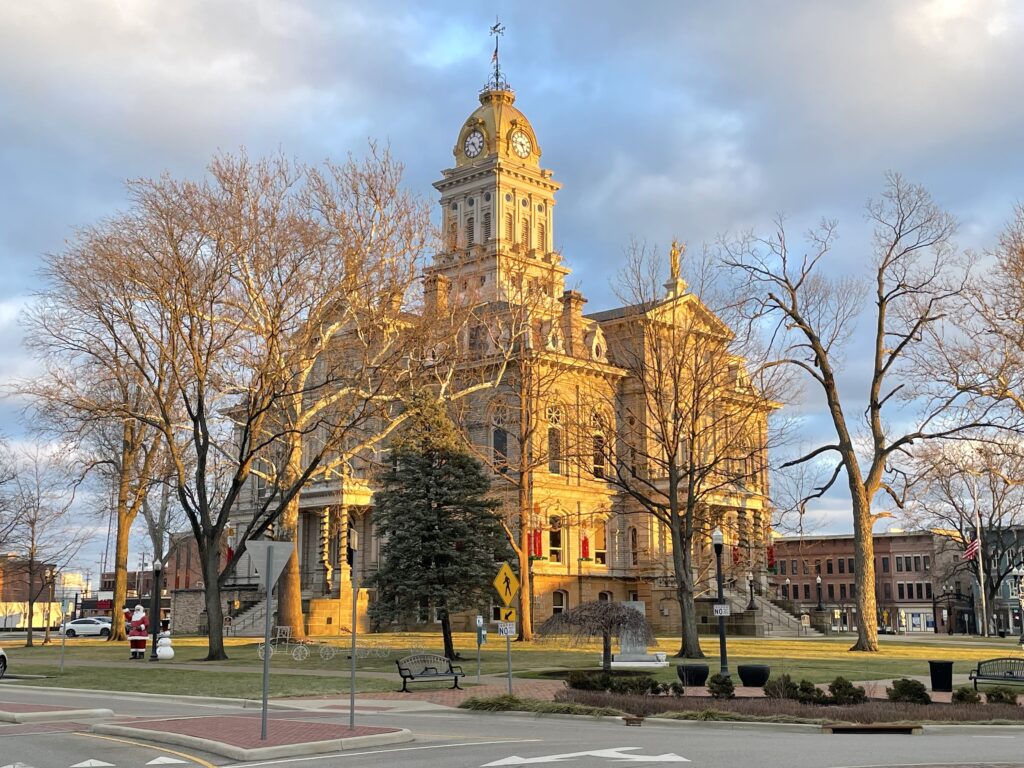
From the bench, the judge can see to his left a radiant new stained-glass image depicting “Government” within a stately arch. It replaced a less dignified, painted glass image of the same scene that is believed to have been added long after the courthouse was built. New stained glass over the main entrance doors replaced equally meager, older artwork.
The afternoon sun lights up stained-glass images of President George Washington and Benjamin Franklin on the west wall, while the more muted light from the north illuminates images of President Thomas Jefferson, the Marquis de Lafayette and President James Monroe. Between the stained-glass images are more busts – one of President Andrew Jackson and one of former Ohio Gov. Salmon Chase.
Chase also was a Supreme Court chief justice and secretary of the treasury under President Abraham Lincoln, whose portrait is more prominently visible a little above eye-level on the north wall. Two similar portraits on the east wall depict Presidents Ulysses S. Grant and William McKinley.
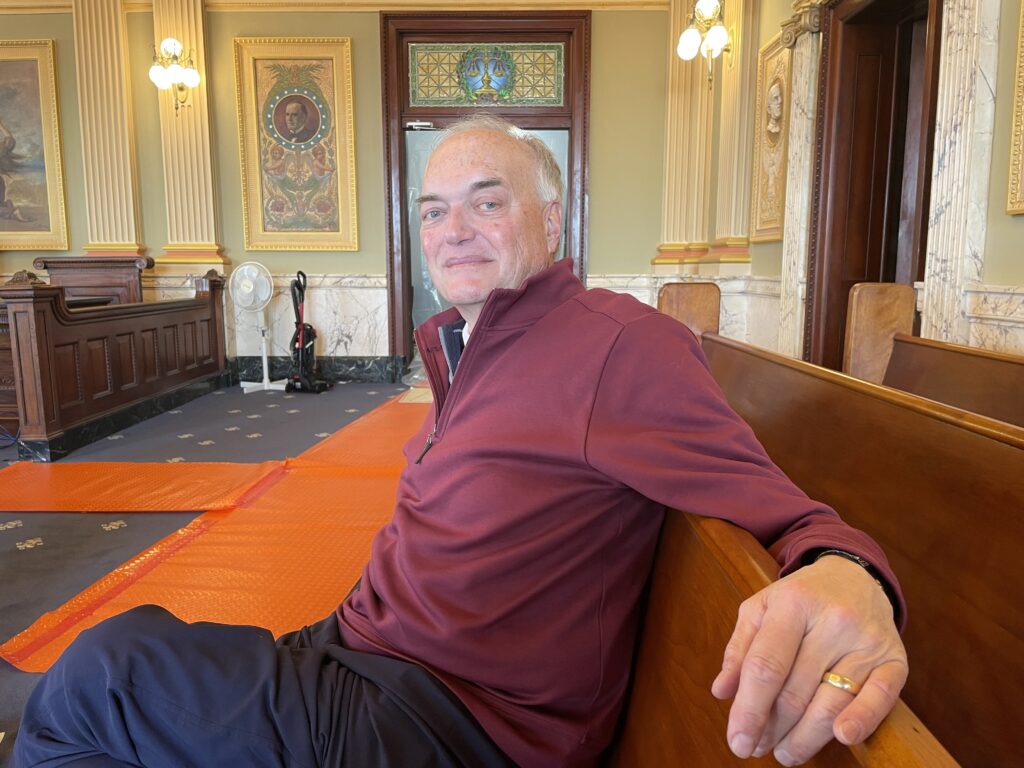
Restored, bas-relief images of Civil War Gen. Charles R. Woods, a Newark native, and Gen. William Rosecrans flank the door to a room where witnesses wait to be called for their testimony. And two new bas-relief images flanking the door to the judge’s chamber are covered with brown paper – to be revealed on May 1 when the restored courtroom will be rededicated in a special ceremony.
May 1 is “Law Day,” when the justice system and those who serve in it are honored. After the rededication event, Bubb said, the courtroom will be open to the public to view the museum-quality artwork and all that has been done to preserve the history and character of that space within the centerpiece of downtown Newark.
Alan Miller writes for TheReportingProject.org, the nonprofit news organization of Denison University’s Journalism program, which is supported by generous donations from readers. Sign up for The Reporting Project newsletter here.


